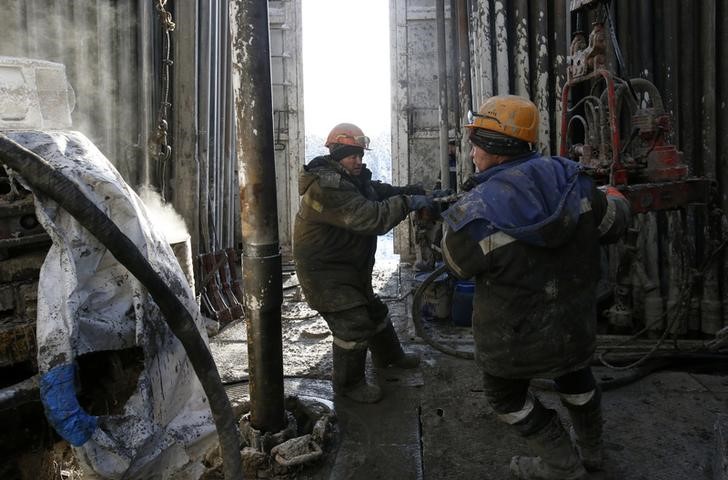Investing.com - Oil prices rose in holiday-thinned European trade on Monday, amid indications U.S. shale oil producers are cutting back on drilling activity.
Crude oil for May delivery on the New York Mercantile Exchange tacked on 64 cents, or 1.62%, to trade at $40.10 a barrel by 07:48GMT, or 3:48AM ET.
According to oilfield services provider Baker Hughes, the number of rigs drilling for oil in the U.S. fell by 15 last week to 372. The decline follows an increase of one rig the week before, which marked the first oil-rig count rise of the year.
A lower U.S. rig count is usually a bullish sign for oil as it signals potentially lower production in the future.
Since falling to 13-year lows at $26.05 on February 11, U.S. crude futures have rebounded by approximately 45% as a decline in U.S. shale production boosted sentiment. However, analysts warned that market conditions remained weak due to an ongoing glut.
New York-traded oil futures tumbled $2.17, or 5.21%, last week, the first weekly loss since mid-February, as a spike in U.S. crude inventories underlined concerns over a domestic supply glut.
According to the U.S. Energy Information Administration, crude oil inventories rose by a more-than-expected 9.4 million barrels to an all-time high of 532.5 million barrels.
Elsewhere, on the ICE Futures Exchange in London, Brent oil for May delivery rose 48 cents, or 1.19%, to trade at $40.92 a barrel. Meanwhile, the June contract added 48 cents, or 1.17% to $41.51.
Last week, London-traded Brent futures declined 76 cents, or 1.84%, snapping a five-week win streak, amid uncertainty over a deal between major producers to cap output.
Officials from the Paris-based International Energy Agency (IEA) admitted on Thursday that a highly anticipated output freeze between four major producers could essentially be "meaningless".
Producers from the Organization of the Petroleum Exporting Countries and non-members are due to meet on April 17 in Qatar discuss the output freeze. But it isn’t clear exactly which, or how many, OPEC and non-OPEC members will attend the meeting.
Brent futures are up by roughly 45%, since briefly dropping below $30 a barrel on February 11. Short-covering began in mid-February after Saudi Arabia and fellow OPEC members Qatar and Venezuela agreed with non-OPEC member Russia to freeze output at January levels, provided other oil exporters joined in.
Meanwhile, Brent's premium to the WTI crude contract stood at 82 cents a barrel, compared to a gap of 98 cents by close of trade on Thursday.
Trading volumes on Monday will be light as a number of key European markets remain on holiday for Easter, including London, Frankfurt, Paris and Milan.
